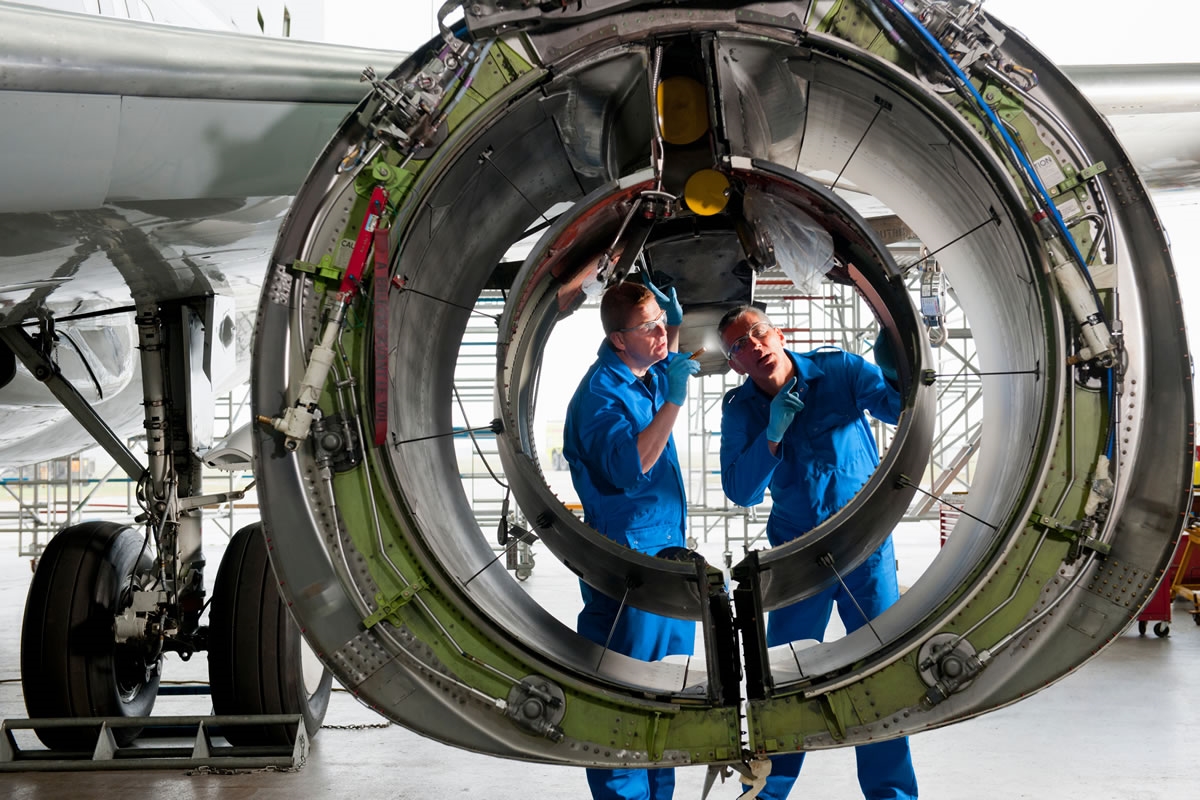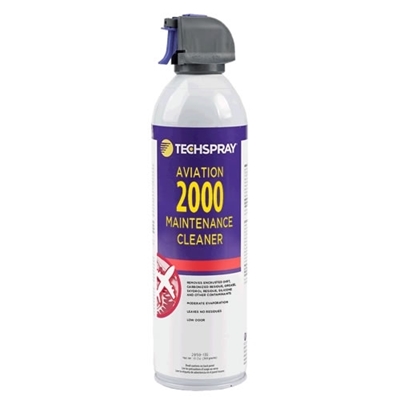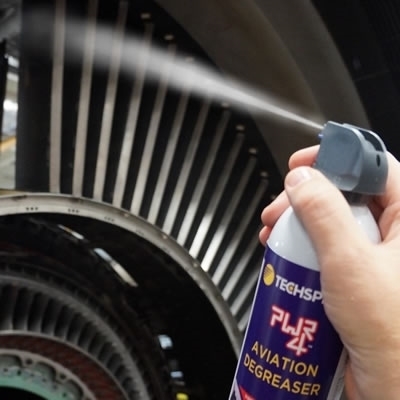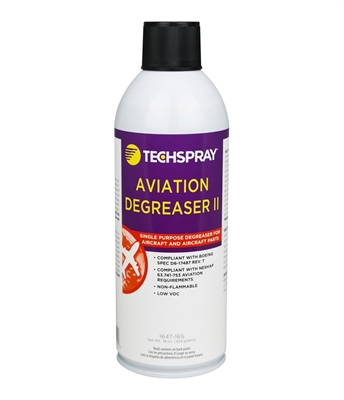FAA regulations require aircraft maintenance personnel to use only approved chemicals. When a failure to meet this legislative requirement can have serious consequences to aircraft and personnel safety, how can a maintenance technician be sure they comply? Technical data sheets and compliance with approved test criteria provide the answer.
Aircraft Loss Due to Hydrogen Embrittlement
Chinook 89-00173 was on a contour flying exercise near Fort Richardson, Alaska on 10 October 1992. The aircrew experienced partial loss of control and the aircraft began spinning. The aircraft impacted the ground but remained upright, and while the aircraft was destroyed the occupants escaped with their lives [1].
The subsequent investigation suspected the cause of the accident was a fastener failure in the upper boost actuator, due to hydrogen embrittlement from an unknown cause. However, we know that using unapproved or inappropriate cleaning fluids on aviation products can cause hydrogen embrittlement, corrosion, and other serious defects.
Risks to Aircraft from Chemical Cleaners
Chemical damage to aircraft is a safety of flight issue, severely affecting airframe and engine integrity. The Chinook 89-00173 event is not uncommon, with accident files and structural damage reports citing cases of airframe corrosion, fatigue, and failure. While environmental impacts or sub-standard inspection and maintenance contribute to such events as well, using inappropriate cleaning agents on aircraft is a critical risk with serious and costly outcomes.
The following photos show the effects of using a well-known but unapproved cleaning product on airframes. The white corrosion is readily evident, requiring extensive repair to restore structural integrity. The corrosion aside, independent testing by the Department of Defense found the cleaner to be a catalyst for hydrogen embrittlement in stressed metal and aluminum alloys.
 |
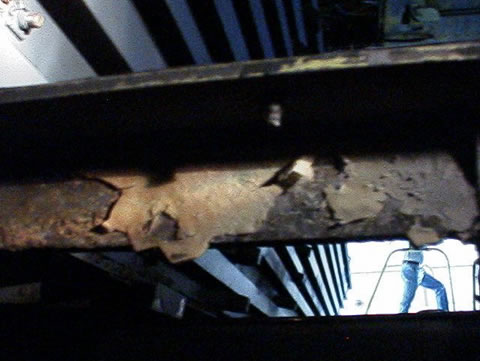 |
| White corrosion on lower fuselage frame | Corrosion evident on transverse floor beam |
Routine maintenance will identify the kind of degradation evident in the photos, yet fuselage lap joints and stressed structural components may also have been in contact with the cleaner, with failure being the first and only indication.
Causes of Aircraft Corrosion
Two classifications of aircraft corrosion [2] are of interest when considering the effect of cleaning products; direct chemical attack and electrochemical attack. Both forms of corrosion will convert a metal back to a metallic compound, which could be oxide, sulfate, or hydroxide.
Direct chemical attack refers to the exposure of a bare surface to a caustic gas or liquid. Think of battery acid spills in an avionics bay, uric acid attacking structures around aircraft toilets, or hot engine exhaust impinging wing structures. Caustic cleaning agents are equally capable of causing aggressive corrosion if not used as specified by the manufacturer.
An electrochemical attack occurs on two dissimilar metals in the presence of an electrolyte. The effect is similar to a battery, where one metal acts as a cathode and the other an anode. The presence of the electrolyte ensures the current flows from anode to cathode, with the anode reverting to a metallic compound and eroding. Salt-water or non-approved cleaning products can be ideal electrolytes to facilitate this transaction, particularly when trapped in lap joints or crevices in airframes.
As a measure of corrosion’s impact on aviation, the US Department of the Navy estimated their annual cost of corrosion on their aircraft exceeded US$2.6 billion, with aircraft non-availability from corrosion equaling 22.4% [3].
A third more specific classification of chemical impact is more insidious than chemical and electrochemical corrosion. Insidious because it becomes apparent only upon component failure, yet cleaning chemicals can initiate it. It's called hydrogen embrittlement.
What Is Hydrogen Embrittlement?
Hydrogen embrittlement is a complex phenomenon defined as the permanent loss of ductility in a metal or alloy caused by diffusible hydrogen atoms or ions present in the metal or alloy while it’s under stress [4,5].
While hydrogen can be dissolved into a component during manufacturing, heat treatment and other mechanical methods are employed as mitigation. Our focus is on the chemical or electrochemical processes that can generate hydrogen ions on a metal's surface before propagating through the metal structure.
Failure due to hydrogen embrittlement occurs when the atomic hydrogen within the metal or alloy diffuses or moves to the area of highest stress. As the hydrogen concentrations increase, the metal or alloy loses ductility, becoming brittle.
Eventually, the hydrogen concentration reaches a point where the stress will cause a micro-crack. The hydrogen moves to the tip of the crack, which continues to expand. Eventually, the metal or alloy becomes overloaded and ruptures at stresses considerably less than the designed strength of the component.
The action of some cleaning products depends on weak acid solutions for their effect. However, acids in solution release hydrogen ions which are small enough to penetrate protective surface films. These ions are absorbed into the base metal and reduced to hydrogen before propagating through the metal as previously described [6].
Avoiding Damage from Hydrogen Embrittlement and Corrosion
Federal Aviation advisory circular 43-205 provides test criteria to qualify general cleaning agents for application to aviation products. The advisory circular is designed to ensure such agents do not degrade airworthiness. Using standards taken from the aircraft industry, the military, and the Society of Automotive Engineers (SAE), six tests apply to chemicals used for general cleaning of painted and unpainted surfaces.
- Sandwich Corrosion Test ASTM 1110
- Immersion Corrosion Test ASTM F483
- Hydrogen Embrittlement ASTM F519
- Effect On Painted Surfaces ASTM F502
- Acrylic Crazing Test ASTM F484
- Residue ASTM F485
FAA AC 43-205 does not constitute a regulation, and therefore the tests are not mandated. However, FAA regulations require each certified person to ensure that chemical agents used on aviation products not complying with these tests meet equivalent standards approved by the FAA via a request for an alternate method of compliance (AMOC).
Cleaning Agent Test Criteria for Corrosion and Embrittlement
We'll take a look at the six tests from AC 43-205 to understand how they're conducted and what they measure.
Sandwich Corrosion Test ASTM 1110
This test determines whether aircraft structural aluminum alloys may be corroded or otherwise damaged by the routine application of a cleaning product. It measures the corrosion potential of the product when trapped between two faying surfaces. It is applicable for either dry granular or liquid products.
Aluminum test pieces are sandwiched together, separated by filter paper saturated in the cleaning product. One test piece uses a concentrated cleaning product, the second a dilute cleaning solution and the third control test piece uses water. They are then placed in a controlled environment for seven days and cycled between warm ambient air and warm humid air.
The two pieces exposed to the cleaning product undergo a qualitative visual evaluation following the test. The visual evaluation seeks to determine whether the faces exposed to the cleaning product exhibit greater corrosion than the test piece exposed only to water. Any corrosion greater than the control is cause for rejection.
Immersion Corrosion Test ASTM F483
Similar to the previous test, the immersion control test determines whether aircraft structural aluminum alloys may be corroded by exposure to chemicals.
The test piece is accurately weighed, then immersed in the chemical for a prescribed time. Following immersion, the test piece is weighed 24 hours and seven days after exposure. In addition to the quantitative weight loss assessment, a qualitative visual examination is conducted to ascertain the extent of any corrosion or pitting. An average weight loss of metal exceeding 10 mg is a cause for failure.
Hydrogen Embrittlement ASTM F519
ASTM F519 exposes a test piece of metal or alloy to the cleaning liquid, as would be experienced in service. Following exposure, the test piece undergoes tensile testing at a prescribed load. To pass the test, the test piece must meet or exceed 200 hours at load without fracture.
Effect on Painted Surfaces ASTM F502
While we've seen that hydrogen embrittlement can occur even with an adequate covering of paint, the corrosive effects of fluids can be mitigated by a correctly applied and maintained surface coating. However, cleaning products can contain ingredients that soften or destroy the important protective barrier, leaving the undersurface vulnerable to chemical or electrochemical attack.
ASTM F502 determines the effect of cleaning solutions and concentrates on painted aircraft surfaces. In the process, test panels are prepared and cured following the relevant paint application specification or Mil-Spec. The cleaning solution is then applied.
A qualitative assessment is made on the degree of streaking and discoloration. In contrast, a semi-quantitative assessment uses a series of prepared pencils of progressive hardness to determine the softest pencil needed to rupture the paint film before and after exposure to the cleaning product. A pass criterion requires no greater change in pencil hardness than one pencil pre and post-exposure, with no staining.
Acrylic Crazing Test ASTM F484
Many aircraft windshields and windows are manufactured from curved acrylic panels, so it's important to know the effect of cleaning products on the item's integrity. Studies have shown that stress crazing on acrylic surfaces requires two factors to be present. The testing lab must apply stress to the acrylic sheet in the presence of an aggressive liquid or solvent. If allowed to progress unchecked, stress crazing can cause failure [7].
ASTM F484 determines the effect a liquid or semi-liquid compound will have on transparent acrylic material subjected to bending stress. Three test panels are prepared, conforming to MIL-PRF-5425, 8184, and 25690, respectively.
F484 prescribes the jig and stressing procedure to be followed, with a visual test after 10 minutes of preloading to ensure no crazing has occurred. A cotton swab is then soaked in the test fluid and placed on the surface of the acrylic panel. The test will run for a maximum of 8 hours, with inspections for crazing at 30 minutes, and at 1, 2, 4, and 8 hours. The test terminates when crazing or degradation is observed.
A report of the results will indicate whether the test piece was not affected, or had light crazing, was cracked, rippled, or stained. It will also indicate the time taken for the cleaning product to degrade the surface.
Residue ASTM F485
This standard defines a procedure to determine the effect of cleaners on unpainted aircraft surfaces. It uses visual observation to ensure that cleaners do not leave a residue leaving a permanent stain that requires removal by polishing once dry.
The process involves using two clean test panels of alclad aluminum and titanium alloy. These panels are immersed for 5 minutes in the cleaning solution to half their surface. They are dried in an oven, cooled, and rinsed on removal from the solution. A visual inspection is then conducted for the presence of residue or stains.
The final report must indicate the concentration at which the test was performed and the diluent with which it was mixed. It must also note the appearance of the panel.
Equivalent Aviation MRO Standards
While compliance with FAA AC 43-205 is one method of ensuring your cleaning product will do no harm, other acceptable standards use the same or similar tests. The Boeing aircraft company publishes a standard entitled Boeing D6-17487 Rev N Exterior and General Cleaners and Liquid Waxes, Polishes, and Polishing Compounds. This standard uses four of the six tests above, omitting the immersion and residue tests.
Airbus issues a standard called Airbus AIMS 09-00-002 Evaluation of Maintenance Materials, Exterior, and General Cleaners. This standard uses all six of the tests above. Military specification Mil-PRF-85570 uses the above six tests, plus an additional six covering such aspects as flammability, flashpoint, and corrosion of cadmium-plate.
The following table lists popular standards against which many aviation cleaning products are compliant.
|
Airbus |
|
|
AMS |
|
|
ASTM International |
|
| Boeing Specifications |
|
|
Military Specifications |
|
FAA regulations require those in aircraft maintenance to ensure the acceptability of products used on aviation items. We can do that by checking the Technical Data Sheet issued by the manufacturer for the specific product. However, they also state that if the manufacturer of an aviation product directs a particular cleaning product to be used, we have met our obligation by complying with the manufacturer's directions. The underlying assumption is that the manufacturer has ensured cleaning product compliance via an alternate method of compliance (AMOC).
Techspray Aviation Cleaning Products
At Techspray, we believe our products should do no harm, whether it's to the aviation product on which it's used, the person using it, or the environment. Our wide range of aviation cleaning products meets test criteria that certify just that.
We maintain a team of chemists and applications specialists who can review your requirements and recommend the most suitable aviation cleaning solution for your purpose. Should you require cleaning product compliance to a specific standard, we'd welcome your call to discuss how we can assist in developing a product that meets your compliance and operating needs.
All employed in aviation have a moral and regulatory obligation to ensure the products they use do not pose a hazard to the safety and integrity of aircraft. Beyond those obligations, the costs to business from reduced aircraft availability, increased corrosion control, and increasing insurance premiums are considerable. Operators can select safe, cost-efficient, and compliant cleaning products by ensuring conformity with test criteria that meet their obligations while reducing operating costs.
For more information on the best solvents to avoid corrosion and embrittlement of aircraft surfaces, contact your Techspray application specialist at info@itwcce.com or 678-726-5623.
References
[1] https://chinook-helicopter.com/maintenance/issues/cleaners/cleaners.html
[2] https://www.aircraftsystemstech.com/2019/03/types-of-corrosion-aircraft-cleaning.html
[4] https://www.boltcouncil.org/files/HydrogenEmbrittlementInSteelFasteners-Brahimi.pdf
[5] https://www.tau.ac.il/~chemlaba/Files/Electrodeposition/13208_02.pdf
[6] https://www.futurecleansystems.com/how-corrosion-relates-to-cleaning/

